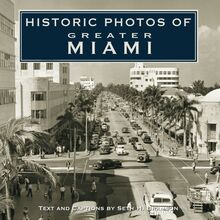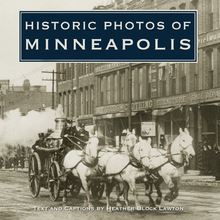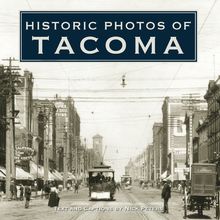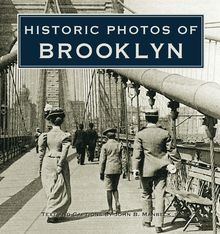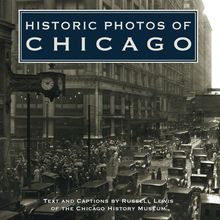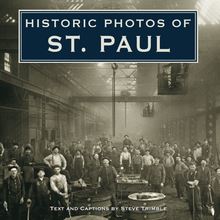Historic Photos of Daytona Beach , livre ebook
124
pages
English
Ebooks
2007
Vous pourrez modifier la taille du texte de cet ouvrage
Obtenez un accès à la bibliothèque pour le consulter en ligne En savoir plus
Découvre YouScribe en t'inscrivant gratuitement
Découvre YouScribe en t'inscrivant gratuitement
124
pages
English
Ebooks
2007
Vous pourrez modifier la taille du texte de cet ouvrage
Obtenez un accès à la bibliothèque pour le consulter en ligne En savoir plus
Publié par
Date de parution
01 février 2007
Nombre de lectures
0
EAN13
9781618586209
Langue
English
Poids de l'ouvrage
16 Mo
Publié par
Date de parution
01 février 2007
Nombre de lectures
0
EAN13
9781618586209
Langue
English
Poids de l'ouvrage
16 Mo
HISTORIC PHOTOS OF
DAYTONA BEACH
T EXT AND C APTIONS BY H AROLD D. C ARDWELL , S R .
Road-beach racing resumed after a hiatus caused by World War II. The track was laid out for 3.5 miles (half the course was on the beach and half on the hard pavement) having a north turn and a south turn. The approach from the beach was hard-packed marl and shell.
HISTORIC PHOTOS OF
DAYTONA BEACH
Turner Publishing Company
200 4th Avenue North Suite 950
Nashville, Tennessee 37219
(615) 255-2665
412 Broadway P.O. Box 3101
Paducah, Kentucky 42002-3101
(270) 443-0121
www.turnerpublishing.com
Copyright 2007 Turner Publishing Company
All rights reserved.
This book or any part thereof may not be reproduced or transmitted in any form or by any means, electronic or mechanical, including photocopying, recording, or by any information storage and retrieval system, without permission in writing from the publisher.
Library of Congress Control Number: 2006937034
ISBN: 1-59652-326-3
Printed in the United States of America
07 08 09 10 11 12 13 14 15 -0 9 8 7 6 5 4 3 2 1
C ONTENTS
A CKNOWLEDGMENTS
P REFACE
F ROM THE W ILDERNESS TO A T OWN (1875-1906)
T RANSPORTATION , I NDUSTRY, AND W ORLD W AR I (1907-1918)
R EAL E STATE B OOM , D EPRESSION, AND W ORLD W AR II (1919-1945)
G ROWTH, THE B EACH , T OURISM, AND R ACING (1946-1965)
N OTES ON THE P HOTOGRAPHS
The Firecracker 400, Fourth of July, 1963. The race was started with the pace car in front and the qualified drivers following behind. Notice the officials giving their signals to the drivers. Today NASCAR has improved the track with new grandstands for the fans, facilities for the race cars, and new safety measures for the drivers.
A CKNOWLEDGMENTS
This volume, Historic Photos of Daytona Beach , is the result of the cooperation and efforts of many individuals, organizations, and corporations. It is with great thanks that we acknowledge in particular the generous assistance of the State Archives of Florida.
We would also like to thank the following individuals for valuable contributions and assistance in making this work possible:
Harold D. Cardwell, Sr., our writer
N. Adam Watson, Photographic Archivist, State Archives of Florida
P REFACE
Daytona Beach has thousands of historic photographs that reside in archives, both locally and nationally. This book began with the observation that, while those photographs are of great interest to many, they are not easily accessible. During a time when Daytona Beach is looking ahead and evaluating its future course, many people are asking, How do we treat the past? These decisions affect every aspect of the city-architecture, public spaces, commerce, infrastructure-and these, in turn, affect the way that people live their lives. This book seeks to provide easy access to a valuable, objective look into the history of Daytona Beach.
The power of photographs is that they are less subjective than words in their treatment of history. Although the photographer can make decisions regarding subject matter and how to capture and present it, photographs do not provide the breadth of interpretation that text does. For this reason, they offer an original, untainted perspective that allows the viewer to interpret and observe.
This project represents countless hours of review and research. The researchers and writer have reviewed thousands of photographs in numerous archives. We greatly appreciate the generous assistance of the individuals and organizations listed in the acknowledgments of this work, without whom this project could not have been completed.
The goal in publishing this work is to provide broader access to this set of extraordinary photographs that seek to inspire, provide perspective, and evoke insight that might assist people who are responsible for determining the future of Daytona Beach. In addition, the book seeks to preserve the past with adequate respect and reverence.
With the exception of touching up imperfections caused by the damage of time and cropping where necessary, no other changes have been made. The focus and clarity of many images is limited to the technology and the ability of the photographer at the time they were taken.
The work is divided into eras. Beginning with some of the earliest known photographs of Daytona Beach, the first section records photographs through the beginning of the twentieth century. The second section covers the early twentieth century through World War I. Section Three spans a period of time from the close of the First World War to the close of the Second. The last section moves from the postwar era to recent times.
In each of these sections we have made an effort to capture various aspects of life through our selection of photographs. People, commerce, transportation, infrastructure, religious institutions, and educational institutions have been included to provide a broad perspective.
We encourage readers to reflect as they go walking in Daytona Beach, strolling through the city, its parks, and its neighborhoods. It is the publisher s hope that in utilizing this work, longtime residents will learn something new and that new residents will gain a perspective on where Daytona Beach has been, so that each can contribute to its future.
Todd Bottorff, Publisher
This primitive log structure was one of the earliest landmarks along the Halifax riverfront that later became Daytona. It stood about where 154 South Beach Street is today. The logs were hand-hewn and boards were hand split. Later rough-sawn lumber was available to build houses when a sawmill was built in the settlement.
F ROM THE W ILDERNESS TO A T OWN
(1875-1906)
The first settlement was carved out of an old, overgrown plantation by Matthias Day. He brought fourteen workers from Ohio to build houses and a hotel where the men could stay. Log cabins were the first shelters to be built out of hewn timbers and split boards.
On July 26, 1876, twenty-five settlers convened at Jackson s store to organize a town. They appointed a council and they named the settlement Daytona to honor Matthias Day.
A second sawmill that started up to produce rough-sawn boards and timbers was Manley s Sawmill. It was located on Orange Isle on the Halifax River north of the settlement. This new source of lumber enabled the settlers to build homes, bridges, boats, and stores.
On December 2, 1886, a steam locomotive named Bulow arrived in Daytona pulling the first passenger cars on a narrow-gauge track. Henry Flagler purchased this railroad in 1888 and extended his Florida East Coast Railway Company into Daytona. The first depot was near where Orange Avenue and Beach Street are today. Businessmen started arriving and new stores, hotels, and houses were built. Mrs. Wilmans Post arrived later and established the town of Seabreeze. A yacht club was built on the river and the first automobile appeared in the town in 1898. Beach outings and fishing became a draw for tourists.
At the turn of the century, horses and carriages still plied the streets, which were still unpaved. After 1901, electricity became available. Ferryboats handled crossings but new bridges were being built to connect the mainland to the peninsula. As horseless carriages became less of a phenomenon, speed records were being set at nearby Ormond Beach and on Daytona Beach. The Florida East Coast Automobile Association was organized in 1903, and membership included well-known men like Burgoyne, Vanderbilt, Flagler, and others.
Mary McLeod Bethune started her school to teach the children of railroad workers.
The era ended with Daytona having risen quickly from a primitive settlement to a recognized tourist destination.
This steam-powered sawmill stood on the Halifax riverfront. Logs were floated to the riverbank or brought overland by ox cart. The rough-sawn lumber made possible the construction of houses, boarding houses, and bridges.
John Botefuhr, pictured, was a boat builder and sea captain. Boat construction was started by laying a long-leaf yellow pine keel. The bow stem and ribs were made from live oak, deck beams and planking were pine, and siding was cypress. All of this was secured with bolts and pins. The size of the boat depended on whether it was to be a sailing or steam-powered vessel.
The small town of Daytona was growing. Buildings and houses, boats and docks were being constructed. Daytona was isolated by a lack of overland roads. Boats were the main source of transportation; therefore, the riverfront was most important. Here, Manley s sawmill is present in the distance.
The St. Johns and Halifax River Railway Company brought the narrow-gauge railroad to Daytona, December 2, 1886. The steam-powered locomotive, Bulow , was built by the Baldwin Railroad Works. Pulling the first cars with passengers to the terminal at Daytona s riverfront, it introduced a new era of transportation to the settlement.
Matthias Day, founder of Daytona, built the Colony House in 1872 for the boarding workers who were building new houses in the settlement. Roofing shingles did not arrive in time for the opening, so palmetto fronds were used-hence the name Palmetto House. Fire destroyed the building in 1922.
At right is the Thompson Bros. general store and to the left is the Lawrence Thompson residence, built in 1879. The road shown was paved with packed marl and crushed shell and is today South Beach Street near Loomis Avenue.
Workers are seen here doing the grading of the right of way for Ocean Boulevard. Mrs. Helen Wilmans Post, riding in her carriage, inspects the construction work. Later the Wilmans Post Opera House and hotel were built on this new boulevard, which became Seabreeze Boulevard.
This fashionable vernacular two-story frame home with gable roof stood on Ridgewood Avenue. New houses were being built in this section of town. This photo was recorded by E. G. Harris, well-known author and photographer.
This early photo by E. G. H





